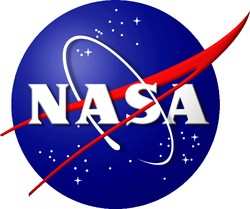Eleven University-Led Proposals Chosen For Funding
NASA has selected 11 university-led proposals for the study of innovative, early stage technologies that address high priority needs of America's space program.

The selected proposals address unique, disruptive, or transformational technologies, including: advanced thermal protection materials modeling, computational materials, in situ utilization of asteroid materials, mobile robotic surface probe concepts for planetary exploration, and kinetic penetrators for icy planetary moons. Selection criteria required technology research that will provide dramatic improvements over existing capabilities for future science and human exploration missions.
"Research in these critical technology areas will enable science and exploration of our home planet, future deep space missions and our journey to Mars," said Michael Gazarik, associate administrator for NASA's Space Technology Mission Directorate in Washington. "New space technology enables exploration while providing real world economic benefits to the American people right here on Earth, right now."
Universities selected for NASA's Early Stage Innovation grants, and the titles of their proposals, are:
- Iowa State University, Ames: Computational Modeling of Nondestructive Evaluation, Defect Detection, and Defect Identification for CFRP Composite Materials
- Missouri University of Science and Technology, Rolla. Laboratory Demonstration and Test of Solar Thermal Asteroid ISRU
- Montana State University, Bozeman: Uncovering the Chemical Processes during Atmospheric Entry of a Carbon/Phenolic Ablator: Laboratory Studies by In Situ Mass Spectrometric and Molecular Beam Techniques
- Stanford University, Stanford, California: Asteroid Surface Resource Characterization Through Distributed Plasma Analysis of Meteoroid Impact Ejecta
- Texas A&M University, College Station: Control of Variability in the Performance of Selective Laser Melting (SLM) Parts through Microstructure Control and Design
- University of California, Berkeley: Precision Hopping/Rolling Robotic Surface Probe Based on Tensegrity Structures
- University of California, Davis: Development of Physics-Based Numerical Models for Uncertainty Quantification of Selective Laser Melting Processes
- University of Kentucky, Lexington: Model Development and Experimental Validation of Reactive Gas and Pyrolysis Product Interactions with Hot Carbon Chars
- University of Vermont, Burlington: Experimental and Numerical Investigation of Ablation Kinetics
- University of Washington, Seattle: Europa Kinetic Ice Penetrator (EKIP)
- West Virginia University, Morgantown: Robotic In-Situ Surface Exploration System (RISES)
The awards from NASA's Space Technology Research Grants Program are worth as much as $500,000 each, with technology research and development efforts taking place over two to three years.
Aligned with NASA's Space Technology Roadmaps, and priorities identified by the National Research Council, the agency's technology research areas lend themselves to the early stage innovative approaches U.S. universities can offer for solving tough space technology challenges.
NASA's Early Stage Innovations efforts are an element of the agency's Space Technology Research Grants Program. This program is designed to accelerate the development of technologies originating in academia that support the future science and exploration needs of NASA, other government agencies, and the commercial space sector.
 Airborne 07.21.25: Nighthawk!, Hartzell Expands, Deltahawk 350HP!
Airborne 07.21.25: Nighthawk!, Hartzell Expands, Deltahawk 350HP! ANN's Daily Aero-Term (07.27.25): Estimated (EST)
ANN's Daily Aero-Term (07.27.25): Estimated (EST) ANN's Daily Aero-Linx (07.27.25)
ANN's Daily Aero-Linx (07.27.25) NTSB Final Report: Luce Buttercup
NTSB Final Report: Luce Buttercup Classic Aero-TV: 'That's All Brother'-Restoring a True Piece of Military History
Classic Aero-TV: 'That's All Brother'-Restoring a True Piece of Military History



